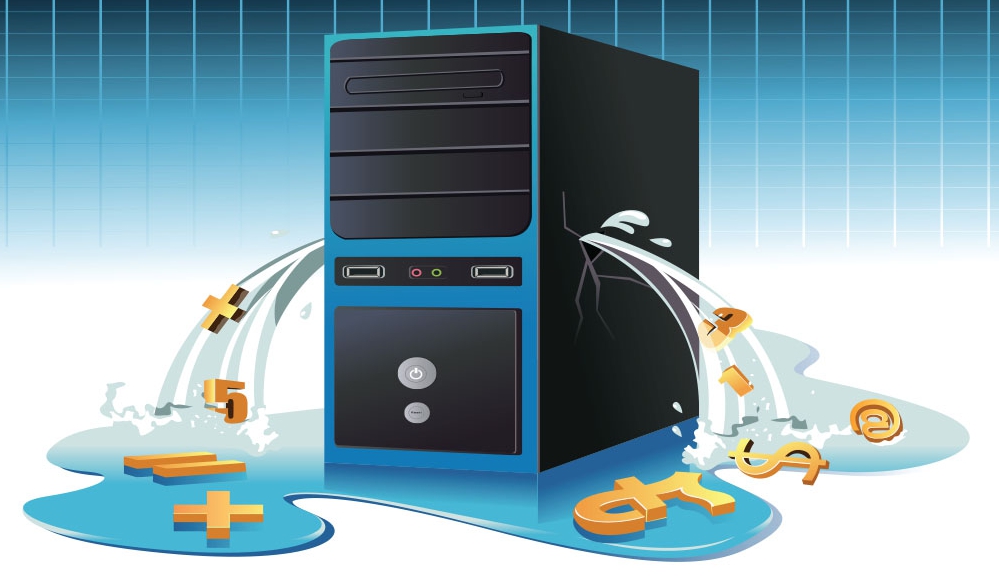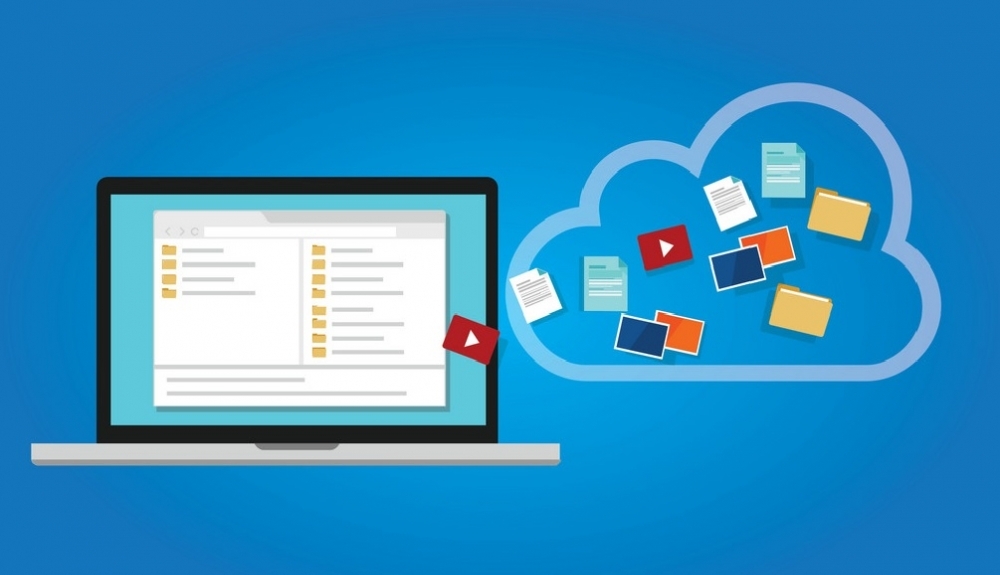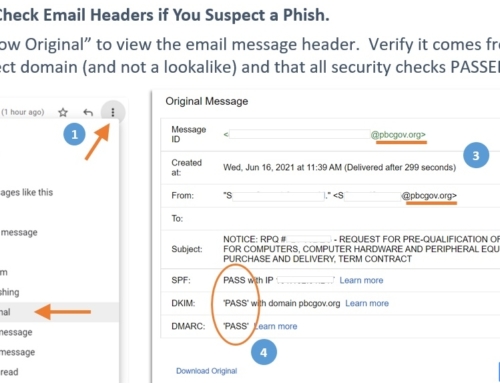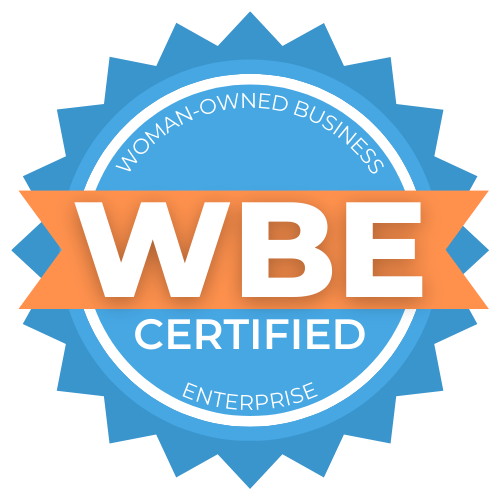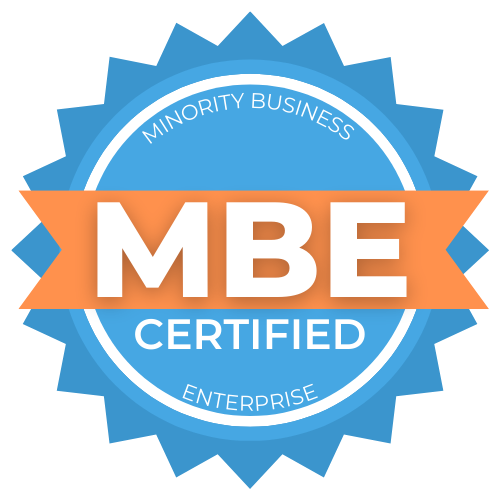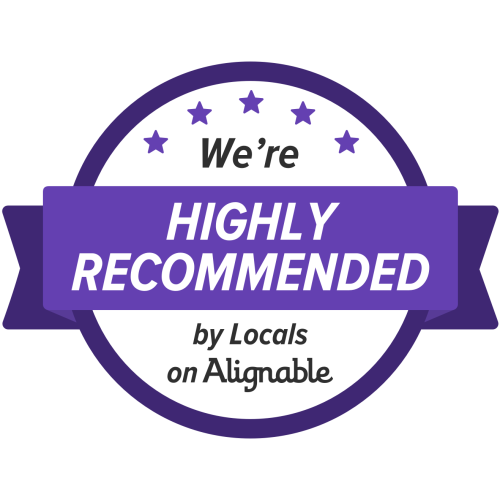Table of Contents
How to make a business work when everyone is working remotely and there are no in-person customers or clients.
This is part of a series that explores a few different perspectives on working remotely from the ranks of eSilo. You can check out our first post with tips for remote workers here. We hope these can either help you today or start some conversations about how to lean-in to the change that’s happening around us.
Well, here we are: regardless of how this whole year started – the world is in a mess. People are socially distant, and for many, that has meant working from home or finding new ways to get their needs and wants met through the internet and gig-economy. This means a whole lot less business is taking place in the office or at the storefront than a year ago.
The only real choice is to either:
- Bury your head in the sand and hope that things resolve quickly enough that traditional business strategy can see you through
OR
- Start to create (or improve) your ability to run your business online
It’s not a choice anymore – the digital age has reached its adolescence.
Why follow our advice on working remotely? I’m going to let you in on a little secret…. We know a thing or two about how to work outside of the office. At eSilo, our entire business model is built around remote support, and we’ve been doing it for years.
We want to help companies that are still trying to figure it all out. Here is a list of tried and true resources that we’ve used ourselves and think you’ll find invaluable. The catch? It’s going to be on the longer side – we want to be thorough here. Feel free to skip around a little and focus on the areas your business needs most.
There is no single formula for success when transitioning your business to be a digital-first business. However, there are best practices when transitioning to working remotely. Our advice: Just start.
Most of the resources below offer free plans and/or trials, and I’d encourage you to take them for a test drive. If you do sign up for a paid plan through an affiliate link we’ve shared, just be aware that we may be compensated with a cup of coffee or two in return.
With that out of the way, onward.
Engaging with your audience
If a tree falls in the forest but no one is there to hear, does it make any sound? Maybe. If a business shouts its message to a distracted audience, does anyone notice? No way.
Working remotely doesn’t have to jeopardize any of your relationships.
It’s far better to spend some time learning how to cultivate a better relationship with your customers and clients using online tools. The methods may be a little different than in-person relationships, but the principles are exactly the same.
1. Customer Relationship Management (CRM)

If you haven’t ever used a CRM before, they track any interactions you or your company has with a particular customer, client, or lead. This gives you a central location where you can see all communications that have been sent to or received from a contact, where they are in your sales funnel (unqualified lead, qualified lead, client, etc.), and determine if it’s time to reach out again to nurture the relationship or follow up on an action item.
If you’re just starting out, you may think you don’t need a fancy CRM tool. But if you’re serious about growing your business (who isn’t?), you’ll want to automate as many tasks as you possibly can to free up time for revenue-generating activities. You may be surprised by just how much the leading CRM products can do, and how affordable they actually are.
At eSilo, we’ve used HubSpot’s free CRM tool for years. It keeps track of all of our prospect, customer and partner interactions in one place, alerts us to new website visitors not already in our database, and saves “snippets” of frequently shared email content, making it faster and easier than ever to respond to prospect inquiries in a consistent manner. My favorite feature is the integration with Outlook and Gmail which tells me when emails I’ve sent were opened (including when and how many times) and if it was forwarded to others to read. Imagine being able to call a prospect in the same moment they’re reading your email and already thinking about your service?
How to get started: Visit their website and at the very top you’ll see an area to access a free CRM tool. You’ll also gain access to some sample forms and templates to help with lead generation, to make sure all your leads are engaged and delighted by your customer service.
And if you’re looking to go beyond just CRM, Hubspot offers many additional paid tools in their Sales, Marketing, and Service Hub packages.
2. Call Answering Service

If you’re working remotely already, then you’ve probably figured out how to run your day to day business from home – but are you doing it optimally?
Picture this: Early on a Tuesday afternoon, a prospective client calls your number and you’re about to answer from the cell phone that you now use to take all business calls. You’re excited to speak with this person and make a good impression. But your dog is barking in the background, your kids need help with Google Classroom, and you realize that picking up the phone in that moment would be a bigger risk than letting the call go to voicemail and hoping you don’t lose this lead. I mean – you never get a second chance to make a good first impression, right?
This is where a call answering service comes into play.
Once the domain of large companies and those TV infomercials, you too can have ‘operators standing by’. (A word of advice: Maybe skip this part of your elevator pitch to new customers).
Still, for modest rates, you can have a team of professionals answer your line and greet your callers, gather key information, take messages, or book appointments. No worst-time-possible interruptions here.
How to get started: A great place to start would be AnswerConnect. This service is reliable, reasonably priced, and they will warm-transfer your calls to any number(s) you designate. If you or your staff aren’t available to take the call, they’ll take a message and send you an email and SMS alert so you can call them back when it’s convenient. They basically function as your own virtual assistant.
3. LinkedIn
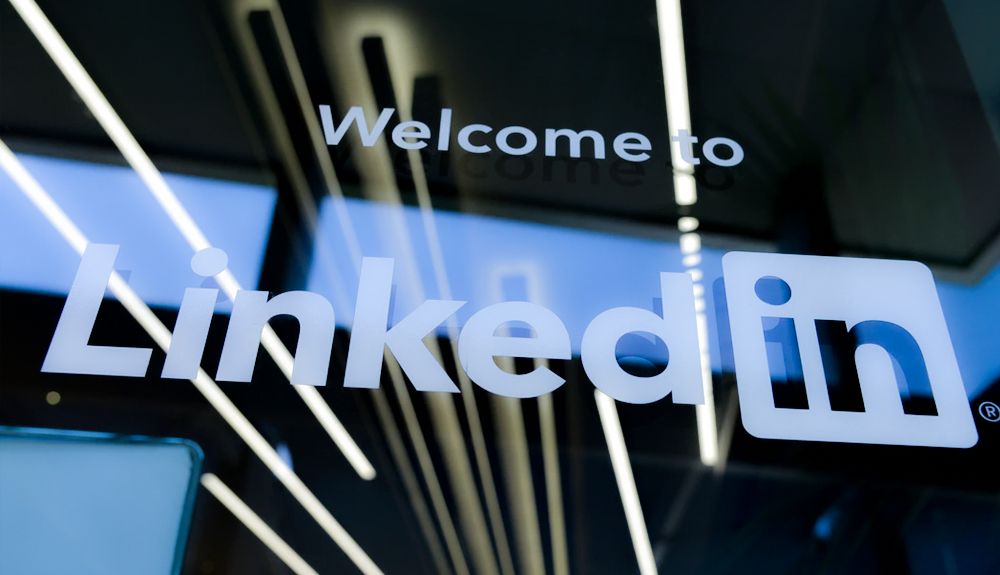
If you’re in the B2B space then this is a goldmine. You absolutely should start leveraging the power of a social network that is engineered for a business connection.
It’s more than just a digital Rolodex. You can find new leads, keep up with your industry by joining groups that are tailored to your niche, or read relevant news articles to keep your edge.
If you haven’t really explored LinkedIn yet, it’s kind of like a Facebook for business where the feed (aka timeline) is relevant business news instead of vacation photos and funny pictures.
How to get started: The more savvy networkers among you will already know this but focus any of your communication on what value you can offer. Of course, you have a great product or service that will solve a pain-point, but what matters to the customer or client is that you can solve a pain-point for them.
One way to do this is by leveraging the power of LinkedIn groups. It’s a way people can separate different topics and find content that is useful and can be applied. By searching for a specific term, you’ll find a bunch of posts that either offer solutions to a problem or can connect you with others who are facing a similar problem or situation (or those who successfully navigated them in the past).
Also, since it’s a business-focused social network, you may get some tips and tricks from others who are trying to figure out how to handle working remotely and how they are making the most of what opportunities are available.
It’s also important to know that LinkedIn’s general tone is more serious than other social networking sites – most interactions have the undertone of wanting to find a good fit for products and services and there are many opportunities for lead generation with regular use.
4. Marketing Automation

Marketing automation software helps businesses organize all their marketing (and often sales) operations in one place. If you could benefit from having marketing tasks done consistently every time–without needing to micromanage, or assign someone to spend a good chunk of their time (and your budget) doing simple, yet repetitive tasks, you can benefit from marketing automation.
One of the biggest pain-points marketing automation software addresses is email outreach.
Let’s face it, email takes a lot of time. Sending emails in a timely manner that can gently guide a customer or client along your sales funnel in just the right way takes even more.
Email can be such a great tool when it’s used effectively. By automating email, you can create a campaign that reaches a customer or client with the right message at the right time. This lets you meet them halfway – on their terms – when they are most likely to respond to a particular message based on where they are in the customer’s journey.
With the rise of Inbound Marketing, where customers and clients find you online based on your social, email and web presence, there is more reason than ever to get an automated marketing system working for your business, with little to no day-to-day interaction required from you.
HubSpot is a thought leader in the inbound marketing space (they literally wrote the book on it) – and if you are reading this sentence, inbound works. As such, you should look into their software, and even if you don’t use it, take advantage of their training to help you learn new tactics for free.
In a time when many people have had to quickly adapt to working remotely and being distracted by a million things, you have to make it easier than ever for a prospect to quickly learn about you and your brand. Effective marketing can help you do this on autopilot.
How to get started: There are a plethora of email marketing and content marketing tools available today. Just pick a tool and start writing emails if you have an email list, or grow your list by offering valuable content to your audience in exchange for addresses.
If you’re ready to go beyond just email marketing, we recommend checking out Hubspot‘s paid Marketing and Sales Hubs. They’ve integrated a bunch of great tools (including the free CRM tool mentioned earlier) and they work together seamlessly. For us, it’s been like having a dedicated marketing person working 24/7, sending out emails, automating tasks, and updating our CRM – even while we sleep.

Working in the office? Check. Working Remotely? Check.
Good marketing is effective marketing no matter how you spin it or on what platform you use it on.
Protecting your bottom line
You’ve spent countless hours building your business. Or maybe you are in a role where you need to make sure that net profit goes up, not down. No matter why you care about your bottom line, you want to protect it.
Whether you’re reading this when you’re back in the office or still working remotely, you can take a few small but key steps to protect all the work you’ve done.
1. Be Proactive With Security

There’s a saying that an ounce of prevention is worth a pound of cure.
Bad News: There are a lot of hackers out there that want to exploit your company and steal your data for their own gain.
Good News: You can make it a whole lot more difficult for them by taking a couple of easy and quick steps to secure your home office.
First, make sure your data and files are only accessible to you and others in your organization who have a good reason to have access to them. Having unrestricted access to files can be dangerous, and while it may be ‘easier’ for everyone to just have admin permissions, it just isn’t worth the risk.
Also, make sure to use a dedicated work computer if you can. Ideally, you’ll want to conduct personal business (and online shopping, gaming, etc.) on a different machine to minimize the chances of exposure to malicious ads, websites, and emails.
You should also physically isolate the work machine to whatever extent possible and keep it out of the hands of other family members if you’re working remotely for the same reason.
If you are doing any level of business online, you should consider Cyber Liability insurance. If you experience a data breach, whether first-party or third-party, you may be liable for legal, forensics, IT, PR, and breach notification costs, not to mention regulatory fines and penalties. Cyber Insurance can help to cover those costs, as well as identity theft protection for your clients and employees.
Ultimately, prevention is the best way to limit your exposure to risk while online. Even small breaches or a short downtime of critical systems can have huge fees to get back up and running, and this doesn’t account for the reputational damage that often plagues the victims of these events.
How to get started: Take the first step and do a quick audit of your online security. If you need help, our eSilo experts can do this for you. Once you know where you stand, start making small changes in the right direction. Making small changes may not fix all of your vulnerabilities right away, but if you make cybersecurity a key component of your strategic business plan, you will get there over time. If you’re anxious to learn (and do) more quickly, I’d suggest reading our comprehensive Ultimate Ransomware Battle Guide which is free to download.
2. Protect Your Data

Aside from your people, your data is one of your business’s most valuable assets. You should take measures to safeguard it accordingly.
No matter what anyone tells you, it’s not possible to prevent all forms of cyber attack that might steal your data or hold it for ransom. And even if you could, 20% of data loss is still caused by hardware failures. Most small businesses just don’t have the IT budget or discipline to proactively replace all devices before they die of old age or other causes. And what about the most frequent cause of data loss – the accidentally deleted file (which always seems to happen at the most inopportune time)?
Unfortunately, data is fragile. These incidents can be catastrophically expensive and when it’s obvious that there’s a problem, it’s often too late.
Automated data backups are a critical safety net for your company. They’re too important to do manually and too easily compromised if stored locally on your network (or in the same physical location as the systems they’re supposed to protect). If any single event – a power surge, flood, burglary, or ransomware attack – could take out your primary systems and backups, you’ve got a big problem. There’s a best practice in the industry called the 3-2-1 rule, and I’d encourage you to read more about how we’ve implemented the 3-2-1 data backup rule at eSilo.
We strongly believe that everyone should have access to the best tools available, even if they don’t have a dedicated IT department. That’s why our eSilo Backup Cloud, powered by Veeam is priced affordably and delivers automatic offsite data protection in a turnkey solution.
It used to be that offsite backup was so expensive that only big companies could afford to do it the right way. With cloud services, now everyone can afford disaster recovery. Think of our service as a way to get what the largest companies use (82% of the Fortune 500 in fact) at small-business-friendly prices.
How to get started: Do yourself a favor – schedule a quick consultation to see how we can help protect you and your company in the digital age. We’ll learn what types of data you have, share our recommendations, and set you up with a 30-day no obligation test drive.
Do More (With Less)
It’s an age-old problem for the entrepreneur and business-person alike: ‘How do I make my dollar or hour go farther?’ Below are some alternative tools that are gaining popularity. If you’re looking to save money, you may find these are well-positioned to replace their more expensive counterparts.
1. Office Productivity

Regardless of what industry you are part of, you probably have had to use office productivity software at some point. Recently, many of these programs have moved online to let users work together, at the same time. Microsoft’s answer is Office 365. Google’s office software is called G-Suite.
Since Office 365 is essentially a web version of Word, PowerPoint, and other legacy software, we’ll focus on G-Suite. This includes Google’s Docs, Sheets, Slides, and many other programs that can replace any traditional set of word processing software or spreadsheets. Your team can work together on your next memo, presentation, or proposal in real-time.
It also has Google Hangouts and Chat where you can have video or audio calls with your team (or leads) and have a record of any Instant Messaging communication you have with them. This one-two punch is more effective today than ever before. You can edit documents in real-time with collaborators, share files, or check your business email with a few clicks.
Even if you and your team are working remotely, you can communicate and work in a way that lets you be just as effective as if you were sitting in you’re third meeting on a Monday morning – only this time you can sit back, with a coffee in hand.
How to get started: eSilo is an authorized Google Partner and Reseller. If you’re interested in exploring what G-Suite can do for your business, reach out to learn more. After setting up, just get to work. Google makes it incredibly easy and intuitive to get straight to the things that matter the most.
2. Ultra-low-cost in-house marketing
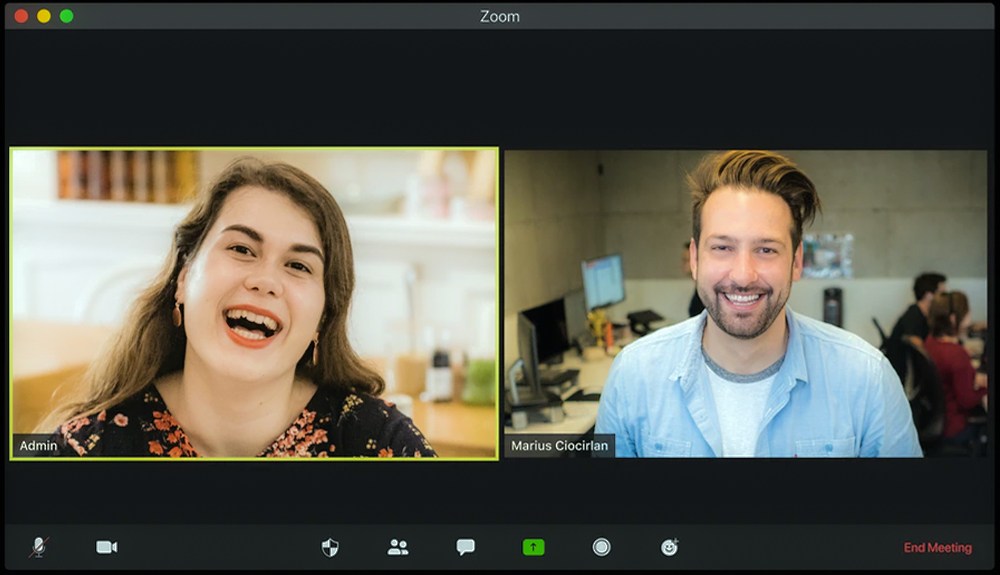
Acadium is a great place for companies to find some fresh and eager marketing talent. Not quite free, but for a small fee, you get access to some incredibly talented and driven individuals that are looking for the opportunity to work remotely as an Apprentice to learn and apply digital marketing for you.
The basic concept is simple: there are people who are willing to help out if you are willing to teach them a bit about what you know and give some feedback about what work they provide. You can give back to the next generation of professionals and get some work done along the way.
By using Acadium, I found out about this opportunity and have had a chance to apply some marketing principles and techniques that I’ve learned and eSilo has an extra player on its marketing team – simply put: it’s a win-win.
How to get started: Click here to join and take a look around the site. Reach out to a couple of prospective apprentices and get a feel for their skills and styles. You might just find a good fit.
P.S. By clicking that link, you’ll get $50 off your ‘credit’ that gets you 90 days of marketing help.
3. Professional quality, self-made graphics
 I have a confession: I am terrible at design. Seriously, I have made deals with peers to do hours of research and writing for them if they’ll make the final product look a little nicer.
I have a confession: I am terrible at design. Seriously, I have made deals with peers to do hours of research and writing for them if they’ll make the final product look a little nicer.
Enter Canva: this graphic editing software allows anyone to quickly create professional-looking graphics for Facebook or other social media, business cards, flyers, or just about any other type of design.
Oh, and did I mention the templates?
There are thousands of templates that are ready to go, just add your text, choose a font, maybe add a logo or picture and you’re good to go.
Or, if you prefer, you can start from scratch and let your inner designer shine.
Since I started using it, I’m still not a pro, but I can make good-enough graphics quickly, and that speaks volumes about how useful this software and it’s templates are.
How to get started: Visit their website canva.com and start creating. If you have a pro account, you can set up specific colors and font types/sizes to match a branding guide for your business to make the whole design process even quicker.
Even if you have a designer, assuming that they are also working remotely, Canva is a great way to get some ideas ‘on paper’ to communicate an idea for a general layout so everyone is on the same page.
Boosting Productivity
We could talk about the importance of productivity but in the interest of boosting yours, let’s dive in.
1. Project Management
 In the world of business, you need to be able to track a project’s status. When business is done in-person, this could have done by catching up at the water cooler, but being online changes the game.
In the world of business, you need to be able to track a project’s status. When business is done in-person, this could have done by catching up at the water cooler, but being online changes the game.
If you’re not sure what projects are being worked on, what their status is, or what is holding a particular project back, then you risk missing goals and deadlines.
Fortunately, there are solutions. While there are many versions of project management software, including Microsoft Project, Asana, and Jira, one of the most popular is Trello.
Trello is a great lightweight project management software that tracks projects across your team and can be used to get a quick view of what the status is of any given task at any specific time. It’s like a digital bulletin board that you can set up quickly to get insights into what projects are being worked on, who’s working on them, and what stage the project is in.
How to get started: On your screen, you’ll have a space to add columns that function as categories. Next, you’ll add ‘cards’ underneath. These function as projects or tasks that can be moved from category to category.
One basic way to use Trello is to set up the columns ‘To-Do’, ‘Work in Progress’, and ‘Done’. By creating a card (a project) in the To-Do column, you’re telling Trello, and whoever else looks at your board, that this new project needs to be done.
Once started, you’ll move the card into the ‘Work in Progress’ column and this will tell Trello and whoever else looks at your board that the status has changed. It’s the same process to update the board once the project is ‘Done’.
After experimenting with this, feel free to experiment a little more and edit the board to fit your own workflow. Another common setup uses individual people as columns and moves cards around to track a project task’s current ownership.
2. Brain.fm

This is a really cool music app that I found recently and have been using while working. The company claims to use a special pattern of sounds to guide a listener into different moods that can promote things like focus or sleep.
Since I am neither a scientist nor medical professional, I can’t make any comments about the true effects of this app, but I can tell you that since I started using it, I feel like it’s helped to guide me into a more focused workflow when I’m listening.
How to get started: If you would like to learn more about what this app is and the claims they make, visit www.brain.fm/science to learn more about their music.
Ready for the next thing? (Bonus Section)

Do you have your business up and running online, with customers and clients delighted, and have the peace of mind that your digital assets are safe?
You do? Great! Next up you’ll want to take a quick look at what’s on the technological horizon.
Since most businesses are trying to figure out how to get their teams up to speed while working remotely, there are a lot of new companies emerging to try and help everyone along.
When a new tech company wants to launch their product or service, they sometimes go to a company like AppSumo to help get exposure. In return, people who are early adopters of their technology can get deep discounts for trying it out.
NOTE: Some of these offers are for products that aren’t quite ready to hit the primetime yet – some are. It’s a quick way to get the pulse of new trends and to vet some potential solutions.
How to get started: Visit AppSumo.com and look around for things that look interesting to you. There’s a lot of offers on there, and some are free.
Final Thoughts
Trying to transition old business models into modern models that can thrive online is tough. So is trying to figure it all out from the ground up.
At the end of the day, working remotely may be daunting, but business is full of challenges – the key here is to adapt and be ready for new opportunities.
Working remotely shouldn’t change any of the fundamentals of your business, although the exact tactics may change – you can still be true to your brand and keep the trust of your customers and clients.
It’s a new day, and with this comes a new opportunity to help others and build a more resilient business at the same time.
Make it count.
Just start.





